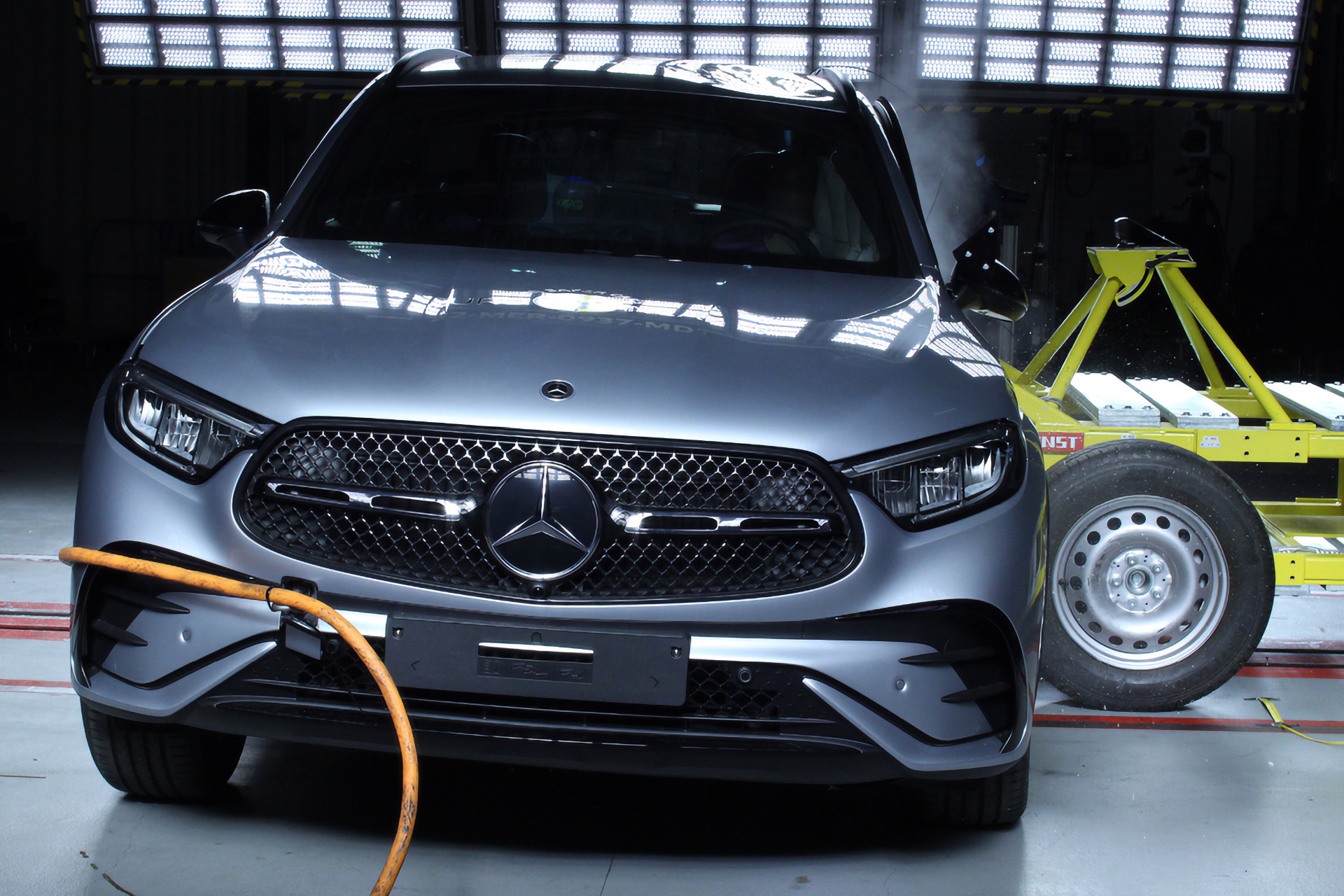ANCAP has announced a five-star safety rating for the Mercedes-Benz GLC, which was introduced in Australia in June 2023. The rating is applicable to all variants.
ADULT OCCUPANT PROTECTION
The passenger compartment of the GLC remained stable in the frontal offset (MPDB) test. Protection of the driver’s chest was adequate, with good protection offered to all other critical body regions. Dummy readings for the passenger showed good protection for all critical body areas.
The front structure of the GLC presented a moderate risk to occupants of an oncoming vehicle in the MPDB test (which evaluates vehicle-to-vehicle compatibility), and a 2.03-point penalty was applied.
In the full width frontal test, protection of the driver dummy was good for all critical body areas. Protection of the rear passenger neck and chest were adequate with good protection of all other critical body areas.
In the side impact test, protection offered to all critical body regions was good while in the oblique pole test, protection of the chest was weak. All other areas provided good protection.
The GLC is equipped with a centre airbag to protect against occupant-to-occupant interaction in side impact crashes. Prevention of excursion (movement towards the other side of the vehicle) in the far side impact tests was assessed as adequate for both the vehicle-to-vehicle impact scenario and the vehicle-to-pole scenario.
CHILD OCCUPANT PROTECTION
During the frontal offset test, dummy readings indicated good protection for all critical body areas of both child dummies, apart from the neck of the 10-year dummy where protection was rated as adequate.
In the side impact test, protection of all critical body areas was good for both child dummies, and maximum points were scored.
The GLC is fitted with lower ISOFix anchorages on the rear outboard seats and top tether anchorages for all rear seating positions.
Installation of typical child restraints available in Australia showed that all of the selected child restraints could be accommodated in all rear seating positions and full points were scored for this assessment.
VULNERABLE ROAD USER PROTECTION
The bonnet of the GLC provided good or adequate protection over most of the bonnet surface, with weak and poor results recorded on the stiff windscreen pillars and sides of the bonnet.
Protection of the pelvis was poor and no points were scored in this assessment, while the bumper provided good or adequate protection to pedestrians’ legs.
The autonomous emergency braking (AEB) system is capable of detecting and reacting to pedestrians and cyclists. Testing of this system showed good performance in forward and reverse pedestrian test scenarios.
Good performance was also seen in cyclist test scenarios, with collisions avoided or mitigated in most scenarios.
SAFETY ASSIST
In addition to the AEB system, which is capable of functioning at highway speeds, the GLC is fitted with a range of safety assist features as standard equipment, including a lane support system with lane keep assist and emergency lane keeping functionality, and blind spot monitoring.
Tests of its AEB (car-to-car) system showed good performance, including AEB junction assist where the test vehicle can autonomously brake to avoid crashes when turning across the path of an oncoming vehicle.
Tests of LSS functionality showed good performance in lane keep assist scenarios, and adequate performance in the more critical ELK situations.
A speed assistance system with speed limit information function is standard, informing the driver of the local speed limit and allowing them to accept the change in speed.
A seatbelt reminder system is fitted to all seating positions, but occupant detection is not available for the rear seats. A driver drowsiness monitor system is fitted as standard.

